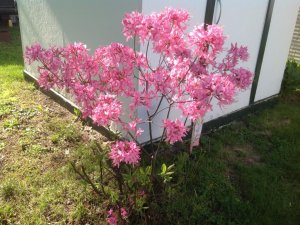Pappy
Living the Dream
This bush has sat out by my shed for several years and never seemed to do anything. I've even toyed with the idea of cutting it down.
Went out yesterday, to go in the shed, and wow.....look at my little skinny plant. It bloomed. Called out the wife and she took this pic. We can't identify the flower.
Went out yesterday, to go in the shed, and wow.....look at my little skinny plant. It bloomed. Called out the wife and she took this pic. We can't identify the flower.







